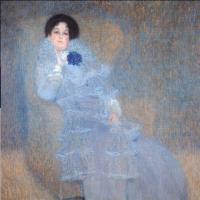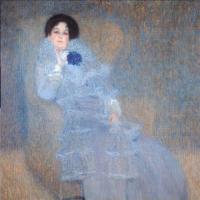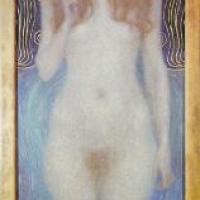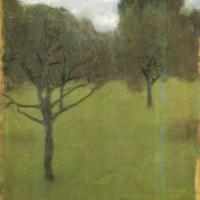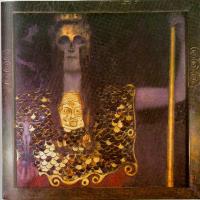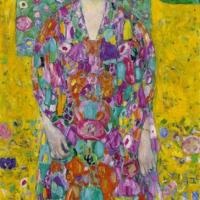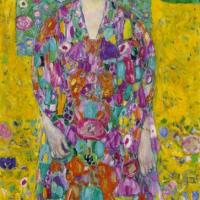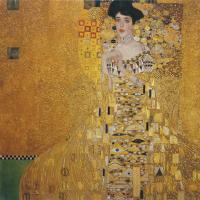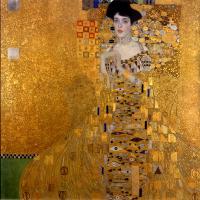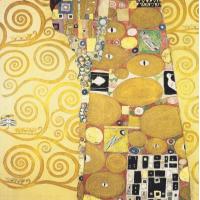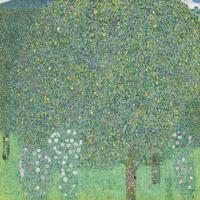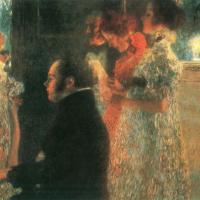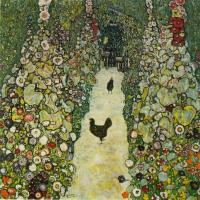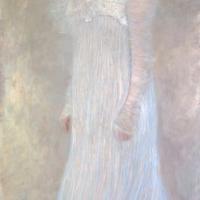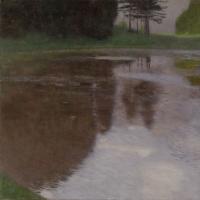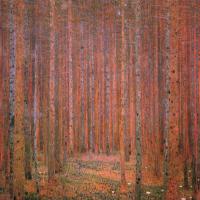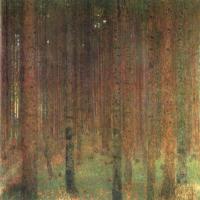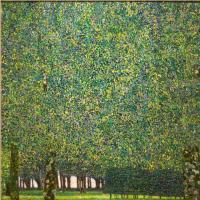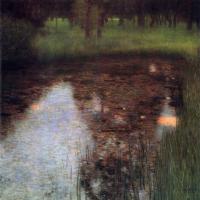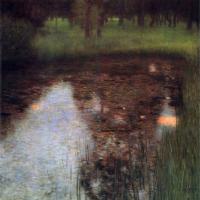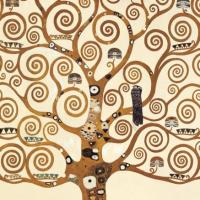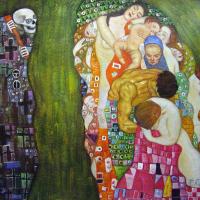Gustav Klimt
Marie Henneberg
$510.00
Nuda Veritas
$480.00
Orchard
$480.00
Pallas Athene
$510.00
Portrait Of Helene Klimt
$450.00
Preparatory Design
$480.00
Rose Bushes under the Trees
$510.00
Still Pond
$510.00
Tannenwald
$510.00
Tannenwald II
$510.00
The Magic of Line
$480.00
The Park
$510.00
The Swamp
$510.00
The Swamp_New.Jpg
$540.00
The Tree Of Life_New.Jpg
$480.00
The Virgins ( The Maiden )
$510.00
Gustav Klimt
Gustav Klimt (1862-1918)
Gustav Klimt (July 14, 1862 – February 6, 1918) was an Austrian symbolist painter and one of the most prominent members of the Vienna Secession movement. Klimt is noted for his paintings, murals, sketches, and other objets d'art. Klimt's primary subject was the female body, and his works are marked by a frank eroticism. In addition to his figurative works, which include allegories and portraits, he painted landscapes. Among the artists of the Vienna Secession, Klimt was the most influenced by Japanese art and its methods.
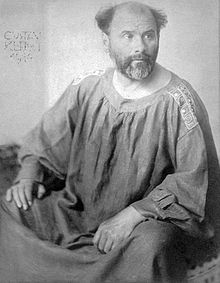
Early in his artistic career, he was a successful painter of architectural decorations in a conventional manner. As he developed a more personal style, his work was the subject of controversy that culminated when the paintings he completed around 1900 for the ceiling of the Great Hall of the University of Vienna were criticized as pornographic. He subsequently accepted no more public commissions, but achieved a new success with the paintings of his "golden phase", many of which include gold leaf. Klimt's work was an important influence on his younger contemporary Egon Schiele.
Gustav Klimt was born in Baumgarten, near Vienna in Austria-Hungary, the second of seven children—three boys and four girls. His mother, Anna Klimt (née Finster), had an unrealized ambition to be a musical performer. His father, Ernst Klimt the Elder, formerly from Bohemia, was a gold engraver. All three of their sons displayed artistic talent early on. Klimt's younger brothers were Ernst Klimt and Georg Klimt.
Klimt lived in poverty while attending the Vienna Kunstgewerbeschule, a school of applied arts and crafts, now the University of Applied Arts Vienna, where he studied architectural painting from 1876 until 1883. He revered Vienna's foremost history painter of the time, Hans Makart. Klimt readily accepted the principles of a conservative training; his early work may be classified as academic. In 1877 his brother, Ernst, who, like his father, would become an engraver, also enrolled in the school. The two brothers and their friend, Franz Matsch, began working together and by 1880 they had received numerous commissions as a team that they called the "Company of Artists". They also helped their teacher in painting murals in the Kunsthistorisches Museum in Vienna. Klimt began his professional career painting interior murals and ceilings in large public buildings on the Ringstraße, including a successful series of "Allegories and Emblems".
In 1888 Klimt received the Golden Order of Merit from Emperor Franz Josef I of Austria for his contributions to murals painted in the Burgtheater in Vienna. He also became an honorary member of the University of Munich and the University of Vienna. In 1892 Klimt's father and brother Ernst both died, and he had to assume financial responsibility for his father's and brother's families. The tragedies also affected his artistic vision and soon he would move towards a new personal style. Characteristic of his style at the end of the 19th century is the inclusion of Nuda Veritas (naked truth) as a symbolic figure in some of his works, including Ancient Greece and Egypt (1891), Pallas Athene (1898) and Nuda Veritas (1899). Historians believe that Klimt with the nuda veritas denounced both the policy of the Habsburgs and Austrian society, which ignored all political and social problems of that time. In the early 1890s Klimt met Austrian fashion designer Emilie Louise Flöge (a sibling of his sister-in-law) who was to be his companion until the end of his life. His painting, The Kiss (1907–08), is thought to be an image of them as lovers. He designed many costumes that she produced and modeled in his works.
During this period Klimt fathered at least fourteen children.
Klimt's 'Golden Phase' was marked by positive critical reaction and financial success. Many of his paintings from this period included gold leaf. Klimt had previously used gold in his Pallas Athene (1898) and Judith I (1901), although the works most popularly associated with this period are the Portrait of Adele Bloch-Bauer I (1907) and The Kiss (1907–08).
In 1905, Klimt created a painted portrait of Margarete Wittgenstein, Ludwig Wittgenstein's sister, on the occasion of her marriage. Then, between 1907 and 1909, Klimt painted five canvases of society women wrapped in fur. His apparent love of costume is expressed in the many photographs of Flöge modeling clothing he had designed.
Klimt wrote little about his vision or his methods. He wrote mostly postcards to Flöge and kept no diary. In a rare writing called "Commentary on a non-existent self-portrait", he states "I have never painted a self-portrait. I am less interested in myself as a subject for a painting than I am in other people, above all women... There is nothing special about me. I am a painter who paints day after day from morning to night ... Who ever wants to know something about me ... ought to look carefully at my pictures."
Klimt's paintings have brought some of the highest prices recorded for individual works of art. In November 2003, Klimt's Landhaus am Attersee sold for $29,128,000, but that sale was soon eclipsed by prices paid for Willem de Kooning's Woman III and later Klimt's own Adele Bloch-Bauer II, the latter of which sold for $150 million in 2016. More frequently than paintings, however, the artist's works on paper can be found on the art market. The art market database Artprice lists 67 auction entries for paintings, but 1564 for drawings and watercolors. The most expensive drawing sold so far was "Reclining Female Nude Facing Left", which was made between 1914 and 1915 and sold in London in 2008 for GB£505,250. However, the majority of the art trade traditionally takes place privately through galleries such as Wienerroither & Kohlbacher, which specialize in the trade with original works by Gustav Klimt and Egon Schieleand regularly present these at monographic exhibitions and international art fairs.
In 2006, the 1907 portrait, Adele Bloch-Bauer I, was purchased for the Neue Galerie New York by Ronald Lauder reportedly for US $135 million, surpassing Picasso's 1905 Boy With a Pipe (sold May 5, 2004 for $104 million), as the highest reported price ever paid for a painting up to that point.
On August 7, 2006, Christie's auction house announced it was handling the sale of the remaining four works by Klimt that were recovered by Maria Altmann and her co-heirs after their long legal battle against Austria (see Republic of Austria v. Altmann). Maria Altmann's fight to regain her family's paintings has been the subject of a number of documentary films, including Adele's Wish. Her struggle also became the subject of the dramatic film the Woman in Gold, a movie inspired by Stealing Klimt, the documentary featuring Maria Altmann herself. The portrait of Adele Bloch-Bauer II was sold at auction in November 2006 for $88 million, the third-highest priced piece of art at auction at the time. The Apple Tree I (c. 1912) sold for $33 million, Birch Forest (1903) sold for $40.3 million, and Houses in Unterach on Lake Atter (1916) sold for $31 million. Collectively, the five restituted paintings netted more than $327 million. The painting Litzlberg am Attersee was auctioned for $40.4 million at Sotheby's in November 2011.
The city of Vienna, Austria had many special exhibitions commemorating the 150th anniversary of Klimt's birth in 2012.


